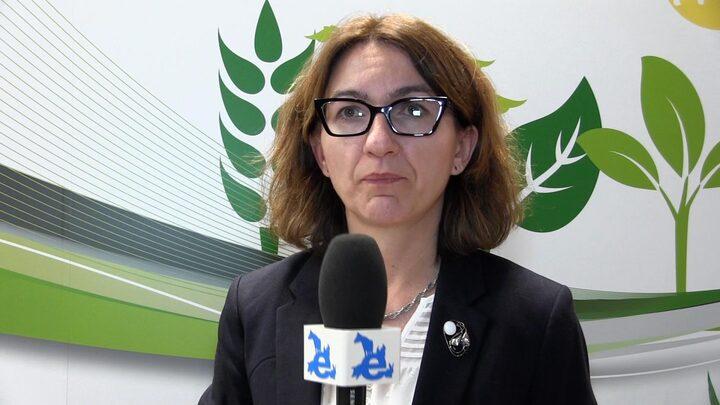Explore all the information on
Bacterial diseases in poultry
Bacterial diseases comprise approximately half of the non–outbreak-related mortality in broiler breeders and commercial layers. During the first week of a broiler's life, approximately 50% of the mortality may be caused due to bacterial infections. Outbreaks due to bacterial infections may increase the mortality dramatically and in some cases almost eradicate flocks. E. coli and Gram-positive cocci infections are responsible for mortality and production losses in poultry of all age groups and all production systems and may be regarded as multifactorial. Subsequently, efforts in understanding and controlling these infections are highly important. Although necrotic enteritis is primarily a disease affecting young chickens, this infection is of major significance in any production system. Besides increased mortality, the production losses observed in subclinical infections may be dramatic.
This disease is going on all the farms. It has mortality a lot of birds. How can it be stopped?...
Comments : 2
Recommendations: 0
Veterinarians are at the forefront of the emerging knowledge economy in the world.
Our ability to organize veterinary knowledge into Veterinary information and data to solve industry problems is the VALUE.
Respiratory infections in domestic animals are a major issue for veterinary and livestock industry....
Comments : 0
Recommendations: 0
What puzzle? – How to grow broilers and produce eggs without the routine use of antibiotics in poultry areas (with endemic mycoplasma challenge). For a long time antibiotics have been used in poultry and egg production but there is considerable consumer/regulatory pressure, price pressure and technical reasons why the administration of antibiotics on a routine basis needs to be phased out of these production systems. The development of resistance in...
Comments : 11
Recommendations: 1
Necrotic enteritis is a major concern in poultry farms because of its association with decreased performance. After the ban of antibiotic growth promoters, a group of feed additives emerged as tools to fight necrotic enteritis....
Comments : 13
Recommendations: 1
Introduction Clostridium septicum (CS) is a ubiquitous, spore-forming bacterium associated with spontaneous gas gangrene in both livestock and humans. The spores can persist in harsh environments, such as the gastrointestinal tract or tissue, and remain undetected for extended periods. When environmental conditions are appropriate for growth, the spores will germinate and proceed to proliferate. CS is capable of producing a variety of toxins. However, the alpha-toxin is the one...
Comments : 0
Recommendations: 0
The new techniques developed for the diagnosis of Salmonellosis in poultry include a wide variety of systems and processes that have succeeded in accurately determining the species involved in Salmonella infections and differentiating between field strains and vaccine...
Comments : 0
Recommendations: 0


Mycotoxin Testing in the Feed Chain: A Risk Prevention Strategy for Raw Material Suppliers, Grain Storage Facilities and Processors, and Feed Manufacturers
Suggested link
Could someone explain the science behind acidifier use? ...
Comments : 0
Recommendations: 0
Salmonellosis continues to be one of the most serious challenges in poultry farming. On the one hand, that which originates from strains causing poultry diseases and, above all, from those serotypes/serovars causing food-borne toxicosis (food...
Comments : 0
Recommendations: 0
.jpg&w=3840&q=75)

Srinivasa Farms and Hy-Line: Pioneering Growth in India’s Poultry Market
Suggested link
...
Comments : 0
Recommendations: 0
Chris Morrow (Bioproperties) discusses antimicrobial resistance, as well as prevention of mycoplasma, and the need for continuous change in poultry production....
Comments : 15
Recommendations: 15
Introduction Avibacterium paragallinarum (Av. paragallinarum) is a gram-negative bacterium that has been isolated worldwide and is the aetiological agent of infectious coryza (IC), a disease that contributes to significant economic losses in the poultry industry. Clinical signs of IC include nasal discharge, facial swelling, and lacrimation. This disease is associated with reduced egg production, poor growth, and high morbidity [1, 2]. However, in cases with secondary...
Comments : 0
Recommendations: 1
Avibacterium paragallinarum is the etiologic agent of infectious coryza, an acute respiratory disease of chickens, which is globally distributed and causes serious economic losses in the poultry production industry. It is a Gram-negative, nonmotile, capsulated, facultative anaerobe belonging to the family Pasteurellaceae and is classified in 9 serovars distributed in 3 serogroups (A, B, and C) (1, 2). The study of its genome and virulence factors (hemagglutinin antigen, capsule,...
Comments : 0
Recommendations: 0


Lost in the Market Uncertainty Caused by the Outbreak
Suggested link
Bacterium Avibacterium paragallinarum is the causative agent of infectious coryza. This is an acute respiratory disease of economic significance in poultry and leads to a decrease in egg production and failure or retardation of egg laying [1]. Serological classification of A. paragallinarum is based on the presence of specific hemagglutinins (HAs). A. paragallinarum strains/isolates are traditionally serotyped by means of 2 schemes: the Page scheme, which...
Comments : 0
Recommendations: 0
Maintaining a healthy poultry gut and immune system is an essential but controllable factor which can directly influence efficient feed conversion. Several studies have demonstrated that a selected yeast postbiotic promotes a healthy gut thus...
Comments : 7
Recommendations: 3
Poultry producers need support to overcome the challenges posed by reducing the use of antibiotics. Phileo has constructed a post-antibiotic program founded on four pillars of quality poultry production: farm management, nutrition, immunity, and gut health. These...
Comments : 0
Recommendations: 2
Live ts mycoplasma vaccines were created to be safe but still immunogenic. So how can we assess this immunogenicity in the field? This bulletin condenses the experience of 20 years trying to monitor vaccine response and differentiate problems from normal responses. Various approaches have been taken to improve serological monitoring (for example, cloned homologous antigens) and understand problems but the conclusion is that humoral antibody is not the mechanism of protection of these...
Comments : 1
Recommendations: 0
Plusvet Animal Health, presents a combination of mycotoxin, risk management and the reinforcement of gut health with this innovative solution to prevent necrotic enteritis and so on....
Comments : 0
Recommendations: 0
Fats are a key component of poultry feeds. Fats supply essential fatty acids, help the absorption of fat-soluble vitamins and are the most efficient source of energy. Heated and oxidized fats contain peroxidation compounds that change the odor and palatability of the fat, while depressing feed intake and...
Comments : 0
Recommendations: 0
As we explained in this article, overgrowth of Avian Pathogenic Escherichia Coli (APEC) in the digestive system is the second most important route of entry of APEC into the body of the bird. Therefore, avoiding the colonization of the digestive system by APEC is key to prevent colibacilosis. Drinking water as a...
Comments : 0
Recommendations: 0
Background Antimicrobial resistance (AMR), is one of the biggest threats to food safety and considered a One-Health issue with the potential of spreading to other countries since resistant pathogens do not recognize boundaries [1, 2]. Recently, we have shown the transmission of AMR E. coli among chickens, humans, and the poultry environment [3, 4]. Globally, antimicrobial agents are used in food animal production to ensure good health and productivity of the animals [5–7]....
Comments : 0
Recommendations: 0






.jpg&w=3840&q=75)
















